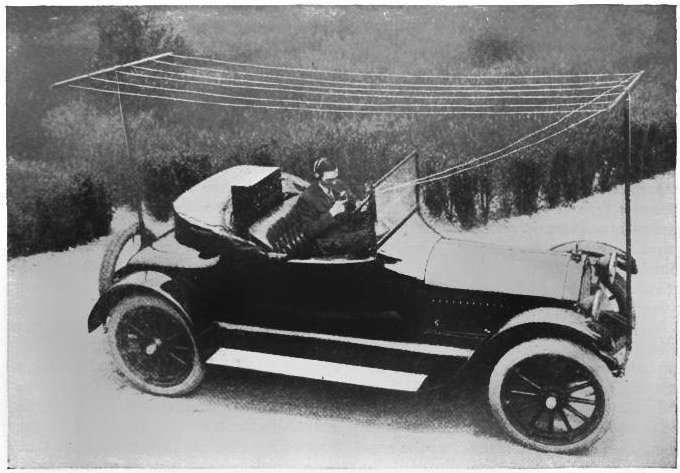Here are some highlights about the early attempts to incorporate radios into cars, from a fascinating write-up by Rob Siegel.

In the early 1920s, radio broadcast channels began to pop up across the United States. All sorts of culture began to move over the airwaves: music, news, preachers, story hours, dramas. The idea that you could bring a steady flow of cultural moments into your home or workplace was a remarkable development. Why not in the car as well?
Highlights:
- It began in the back seat! Initially, people would just lay their battery powered radio in the back seat.
- Where to put all that antenna? Since radio stations weren’t widely distributed yet, people would string antenna wire throughout their cars. Look at that photo!
- How to power it with the car? Also, you couldn’t run a radio with the engine on because of the noise and electrical interference.
- In 1930, Paul Galvin named his version a “Motorola,” which was a combination of “motor” and the well-known Victrola phonograph for making music.
- By the end of the 1930s about 80% of cars still did not have radios. Though radios were functional with push button presents, they were spendy.
(Photo from: commons.wikimedia.org/wiki/File:Amateur_radio_installed_in_car_1919.jpg)
